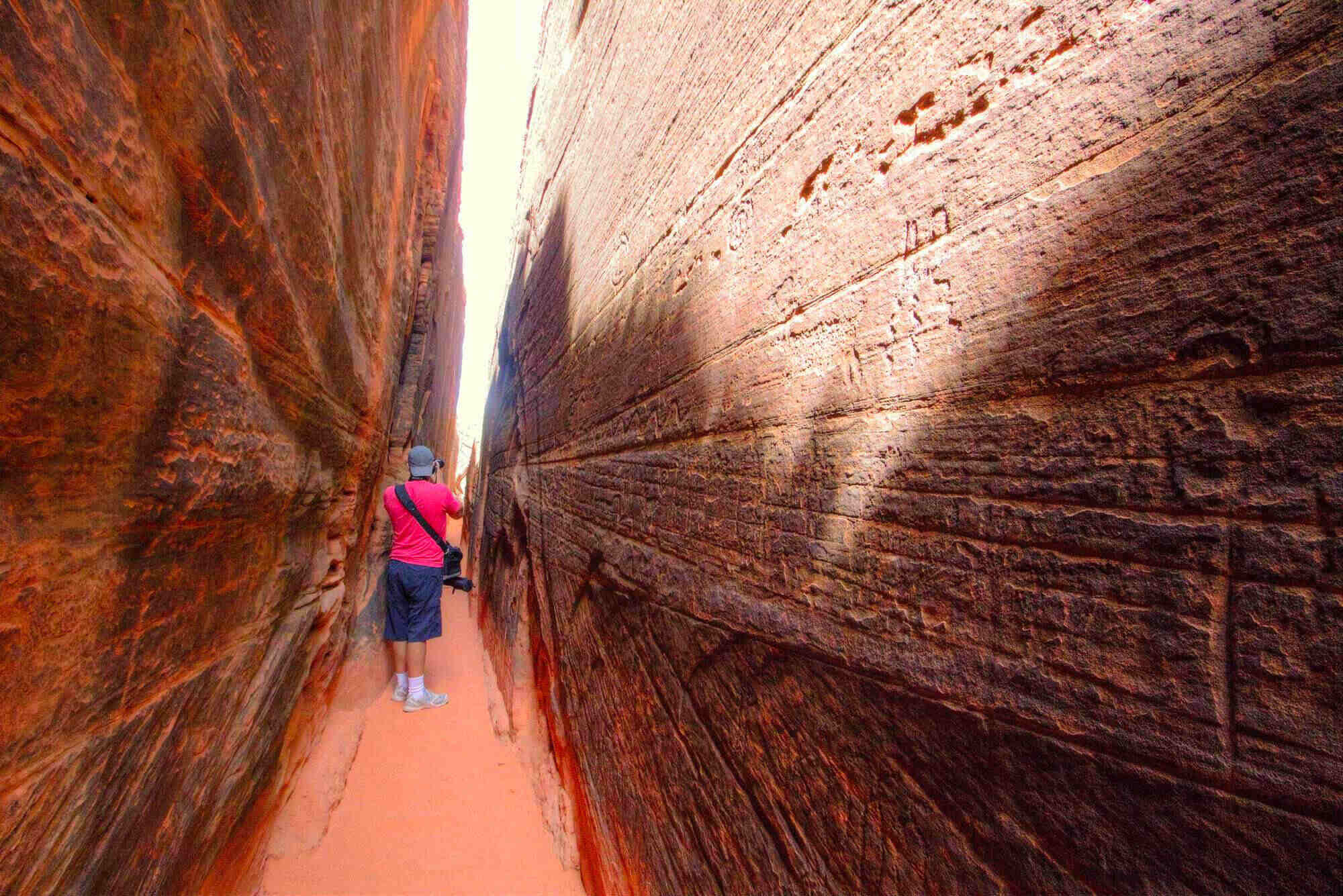Secrets Of The Ancients Hidden In Utah’s Petroglyph Canyons

Have you ever wondered about the stories carved into the rocks of Utah's canyons? These petroglyphs offer a glimpse into the lives of ancient peoples who once roamed the region. Each symbol etched into the stone tells a tale of survival, spirituality, and daily life. Exploring these ancient artworks can feel like stepping back in time, connecting us to a world long gone. Whether you're an avid hiker or a history buff, visiting Utah's petroglyph sites provides a unique adventure. Ready to uncover the secrets of the ancients? Let's dive into the rich history and stunning beauty of these incredible rock carvings.
Discovering Utah's Ancient Petroglyphs
Utah's rugged landscape hides secrets from ancient civilizations. Petroglyphs, or rock carvings, tell stories of people who lived thousands of years ago. These carvings offer a glimpse into their lives, beliefs, and cultures. Let's explore some of the most fascinating petroglyph sites in Utah.
1. Nine Mile Canyon
Known as the "world's longest art gallery," Nine Mile Canyon stretches over 40 miles. This canyon boasts thousands of petroglyphs and pictographs, depicting scenes of daily life, hunting, and spiritual rituals.
Highlights:
- Great Hunt Panel: A detailed depiction of a bighorn sheep hunt.
- Big Buffalo Panel: Features large buffalo figures, showcasing the importance of these animals.
2. Newspaper Rock
Located in the Indian Creek Canyon, Newspaper Rock is a massive rock panel covered with over 650 petroglyphs. These carvings date back 2,000 years and include images of animals, human figures, and mysterious symbols.
Highlights:
- Variety of Symbols: Includes handprints, footprints, and abstract designs.
- Accessibility: Easily accessible from the road, making it a convenient stop.
3. Parowan Gap
Parowan Gap is a natural passageway through the Red Hills. The site is famous for its numerous petroglyphs, which are believed to be a form of ancient communication or a solar calendar.
Highlights:
- Zipper Glyph: A unique zigzag pattern thought to represent a calendar.
- Solar Markers: Alignments with the sun during solstices and equinoxes.
4. Sego Canyon
Sego Canyon, near Thompson Springs, features rock art from three distinct cultures: the Archaic, Fremont, and Ute. This site offers a rich tapestry of styles and themes, reflecting the diverse groups that once inhabited the area.
Highlights:
- Barrier Canyon Style: Ghostly, elongated figures with intricate designs.
- Fremont Style: More realistic depictions of humans and animals.
5. McConkie Ranch
McConkie Ranch, in Dry Fork Canyon, is home to some of the most detailed and well-preserved petroglyphs in Utah. The carvings here are primarily attributed to the Fremont culture.
Highlights:
- Three Kings Panel: Features three large, regal figures.
- Bigfoot Panel: Depicts large human-like footprints, sparking curiosity and legends.
6. Capitol Reef National Park
Capitol Reef National Park offers stunning landscapes and a wealth of petroglyphs. The carvings here are mainly from the Fremont culture and can be found along the park's scenic drive.
Highlights:
- Fremont Petroglyphs: Depicting animals, human figures, and abstract designs.
- Scenic Views: The petroglyphs are set against the backdrop of Capitol Reef's striking rock formations.
7. San Rafael Swell
The San Rafael Swell is a remote, rugged area with numerous petroglyph sites. The rock art here spans thousands of years and includes works from the Archaic, Fremont, and Ute cultures.
Highlights:
- Black Dragon Canyon: Named for a large, dragon-like figure.
- Horseshoe Canyon: Features the Great Gallery, a collection of life-sized human figures.
8. Moab Area
The Moab area, known for its stunning red rock landscapes, also boasts several petroglyph sites. These carvings provide insight into the lives of the ancient peoples who once roamed this region.
Highlights:
- Potash Road: A scenic drive with numerous petroglyph panels.
- Moonflower Canyon: Features a large panel with intricate designs.
9. Dinosaur National Monument
Dinosaur National Monument, straddling the Utah-Colorado border, is famous for its dinosaur fossils. However, it also contains impressive petroglyphs from the Fremont culture.
Highlights:
- Swelter Shelter: A rock shelter with numerous petroglyphs.
- Cub Creek Area: Features several panels with detailed carvings.
10. Buckhorn Wash
Buckhorn Wash, part of the San Rafael Swell, is home to one of Utah's most famous petroglyph panels. The Buckhorn Wash Panel stretches over 130 feet and contains hundreds of carvings.
Highlights:
- Buckhorn Wash Panel: Features a mix of human and animal figures, along with abstract designs.
- Accessibility: Easily accessible by car, with a nearby parking area.
Discovering Utah's Ancient Petroglyphs
Exploring Utah's petroglyph canyons offers a unique glimpse into the past. These ancient carvings tell stories of the people who once roamed these lands. Each symbol, each figure, holds a piece of history waiting to be uncovered. Walking through these canyons, you can almost feel the presence of those who created these intricate designs.
Visiting these sites isn't just about seeing old carvings. It's about connecting with a time long gone, understanding the culture, and appreciating the artistry of ancient civilizations. Whether you're a history buff, an art lover, or just someone who enjoys a good hike, these petroglyphs provide a fascinating experience.
Next time you're in Utah, take a moment to visit these hidden gems. You'll leave with a deeper appreciation for the rich history etched into the canyon walls.

